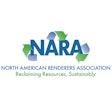|
On the last day of April, the Journal of the American Veterinary Medical Association reported, several dozen epidemiologists, laboratory diagnosticians, clinical nutritionists, toxicologists, pathologists and other veterinary specialists held a conference call to provide a forum for discussion of the animal health aspects of the petfood adulteration and recall. Participants were primarily from the Food and Drug Administration (FDA), American College of Veterinary Internal Medicine (ACVIM), American Association of Veterinary Laboratory Diagnosticians (AVLD) and Veterinary Information Network (VIN). The call was arranged by AVMA staff to facilitate dialogue among these principals, and to identify any new guidance that could be offered to veterinary practitioners treating patients that became sick after eating adulterated petfood. Although no new treatment protocols were recommended, several important points were underscored for communication to veterinary practitioners. In particular, the participants agreed that the standard treatment for renal failure, consisting of fluid therapy and supportive care, seems to be effective in many affected animals. Also, there currently is no evidence that acidifying or alkalinizing the urine will help to dissolve the crystals in vivo . Dr. Neal Bataller, director of the Division of Compliance, FDA Center for Veterinary Medicine, characterized the problem as resulting from a triazine- or melamine-related compound. The current thinking is that a combination of chemicals-each alone, seemingly non-toxic-forms polymers in the animal, and the resulting crystals do physical or other damage, primarily to the kidneys. Melamine and cyanuric acid-related compounds have been shown to cause crystal formation in vitro and perhaps in vivo , Bataller said, but further studies may identify additional substances as well. The American Association of Veterinary Laboratory Diagnosticians (AAVLD) provides suggestions for sample collection on its website; go to www.aavld.org , click on News and then "Protocol for suspected petfood associated nephrotoxicity." One of the sites where veterinarians can view images of the crystals in urine is the University of Guelph Laboratory Services at www.labservices.uoguelph.ca/urgent.cfm#crystals . Veterinarians were also encouraged to participate in the AAVLD online survey on cases they have treated possibly affected by adulterated petfood. The AAVLD and FDA are gathering scientific data related to the recent cases of petfood-induced nephrotoxicity. The main objectives of the survey are to come up with the number of true cases and come up with a case definition for affected animals. The survey is accessible to AAVLD laboratories on the members-only area of the website. Non-members can enter case data via the public area by going to www.aavld.org ; click on News and then on AAVLD Petfood Toxicity Survey. |
Specialists confer about the petfood recall
Although no new treatment protocols were recommended, several important points were underscored for communication to veterinary practitioners
June 12, 2007









